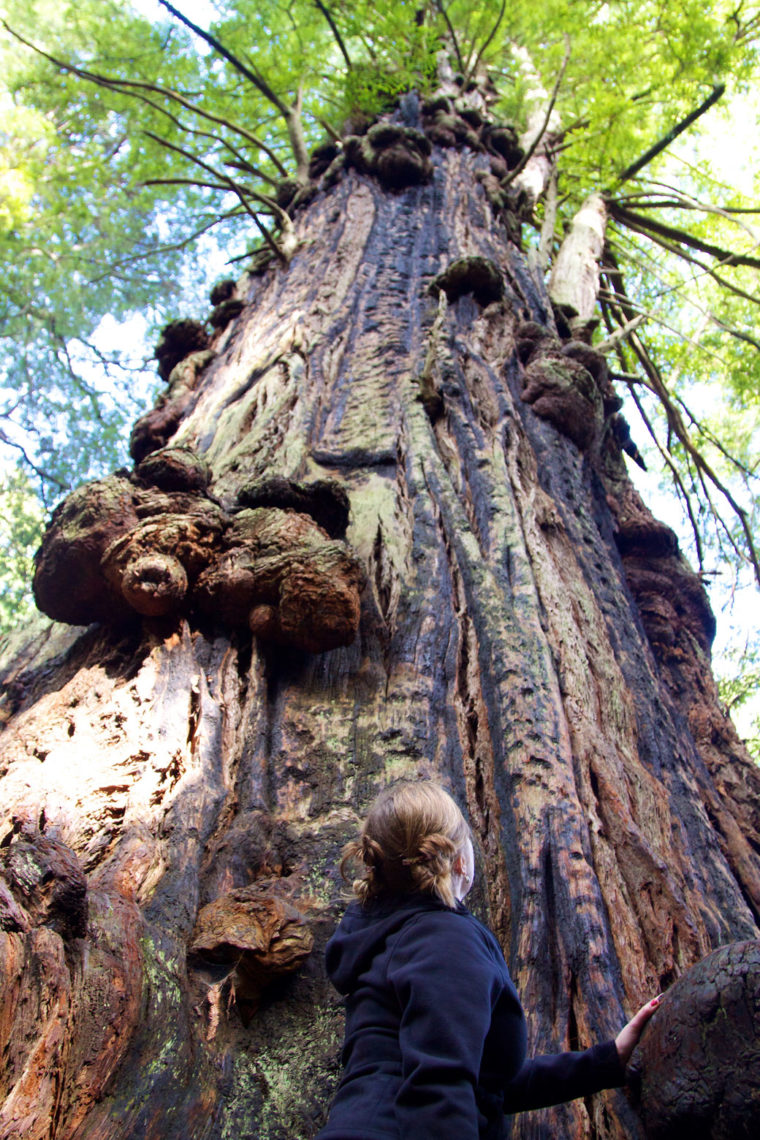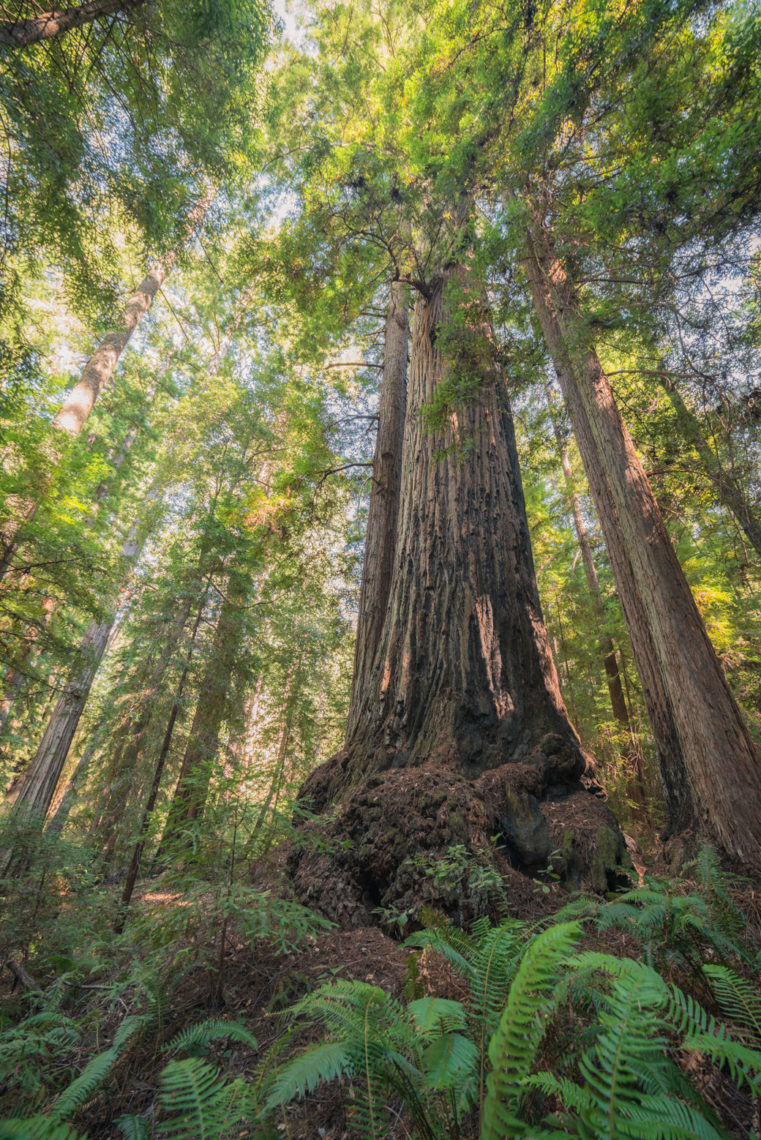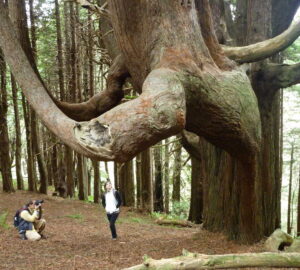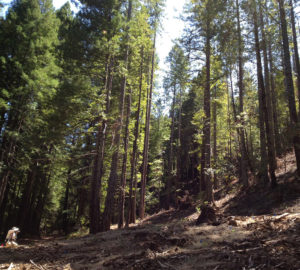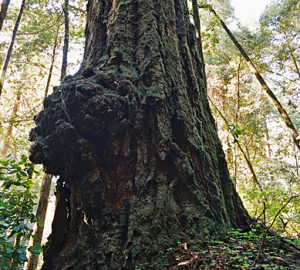We’ve all seen them—those enormous growths on the trunks or bases of coast redwood trees, sometimes covered in new sprouts, sometimes appearing to drip down the side of the tree like the molten remnants of a lost limb. These strange formations are collectively known as burls.
Coast redwoods regenerate in one of two ways: from seedlings and from burls. Redwood burls develop slowly as the tree grows and can range from the size of a softball to several feet thick in diameter.
Burls are prized for their intricately patterned wood that can weigh hundreds of pounds. That’s why you’ll sometimes see them sold as bowls and other trinkets in shops up and down the Northern California coast. Of course, burls should not be removed from trees because doing so would expose the tree to insect or fire damage and disease.
There are different types of burls, all doing different jobs: Basal burls (formally known as lignotubers) are found at the base of the tree, and other types of burls grow on the trunk.
Basal burls start growing early in the tree’s life, becoming visible at around three years old. As the tree matures, these burls can become massive and are often covered with leafy shoots or buds. Basal burls can grow roots to help anchor trees growing on rocky or thin-soiled sites.
Burls on the trunk can grow in response to a wound; they generally begin just above the injury and grow down to cover it. Another type of trunk burl produces new shoots and roots on trees that become partially buried with silt when growing on floodplains. In addition, dormant buds along the trunk and limbs sprout after fires.
We think that basal burls are genetically controlled, while trunk burls are a response to environmental conditions. What happens underground is still mostly a mystery to us.
BURLS
What
A burl is a rounded outgrowth on a tree base or trunk that contains dormant buds. Coast redwood burls can weigh hundreds of pounds.
Poached
Burl wood is so treasured for its intricate patterns that it has been poached from redwood parks. Burls should not be removed from trees because doing so would expose the tree to insect or fire damage and disease.
Do you have a question about redwoods?
Send your questions to us at Redwoods@SaveTheRedwoods.org.
This feature appears in the beautiful printed edition of Redwoods magazine, a showcase of redwoods conservation stories by leading scientists and writers, as well as breathtaking photos, answers to readers’ questions, and how you can help the forest.
Join our thousands of members today for only $25, and you’ll get future editions of our Redwoods magazine.
